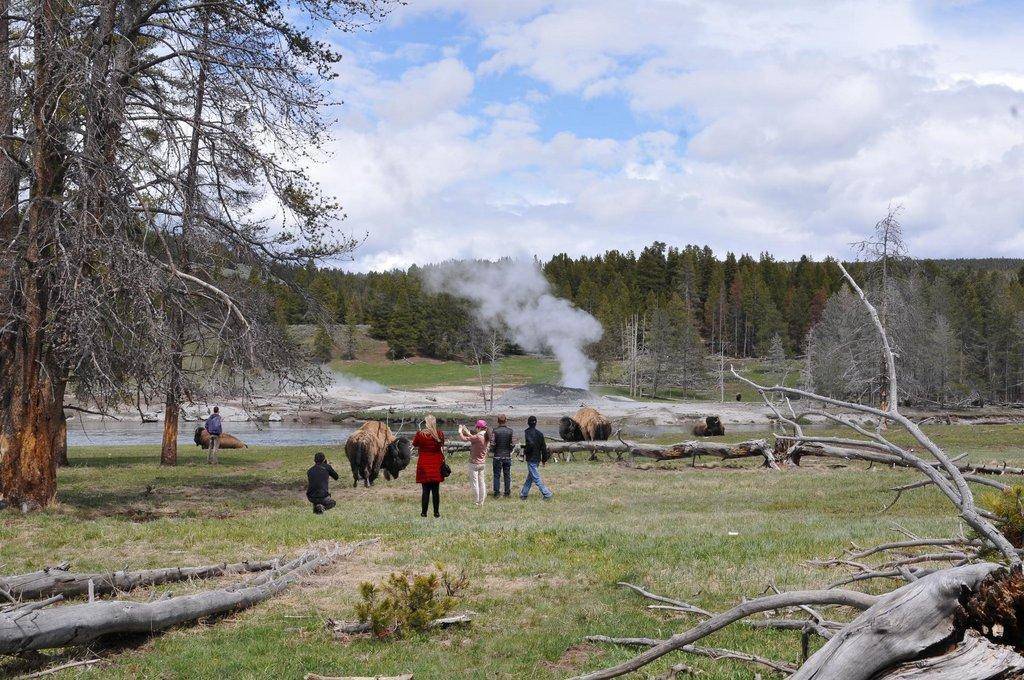By Terry Messmer, Utah State University Extension Wildlife Specialist, terry.messmer@usu.edu
In recent weeks, curious but misguided wildlife watchers in national parks have had unfortunate encounters with wildlife. In one case, the meeting resulted in someone taking a trip to the emergency room after an American bison took issue with being the center of a photograph.
Adult bison can weigh in at 2,000 pounds and run 35 miles per hour. Their hooves and horns can be lethal. The National Park Service recommends that visitors stay at least 25 yards (the approximate length of two school busses) away from wild animals such as bison and elk, and 100 yards from bears and other carnivores.
Although the dangers of human and wildlife close encounters are well documented, humans seem unable to resist the temptation to try to get close to, or even touch, wildlife. Because of the rise of smartphone use, capturing those moments of “connection” has never been easier. Many people hope to boost their social media with a shot of themselves up close and personal with the animals they have only seen on tv or in zoos. Although the intent is not malicious, these actions can place both people and wildlife in harm’s way. Additional concerns include people not understanding wild animal behavior, coupled with their inability to judge what constitutes a safe distance.
A recent paper in Human-Wildlife Interactions, a journal published by the Berryman Institute at Utah State University, provides new insights on the relationship between distance-related, human-bison interactions and smartphones (https://digitalcommons.usu.edu/hwi/vol14/iss1/7/). Results indicate that people who always use a smartphone camera felt it was more acceptable to stand closer to bison than people who did not use one.
Unless you are sure you can make it back to your car in less than 1.5 seconds, which is the amount of time it takes a bison to run 25 yards, it’s best to take a step back. You may miss a great photo, but you may also miss a trip to the emergency room.
To read more, visit berrymaninstitute.org.

